Big Piano Painting Wall Art & Canvas Prints
Big Piano Painting Wall Art & Canvas Prints
Couldn't load pickup availability
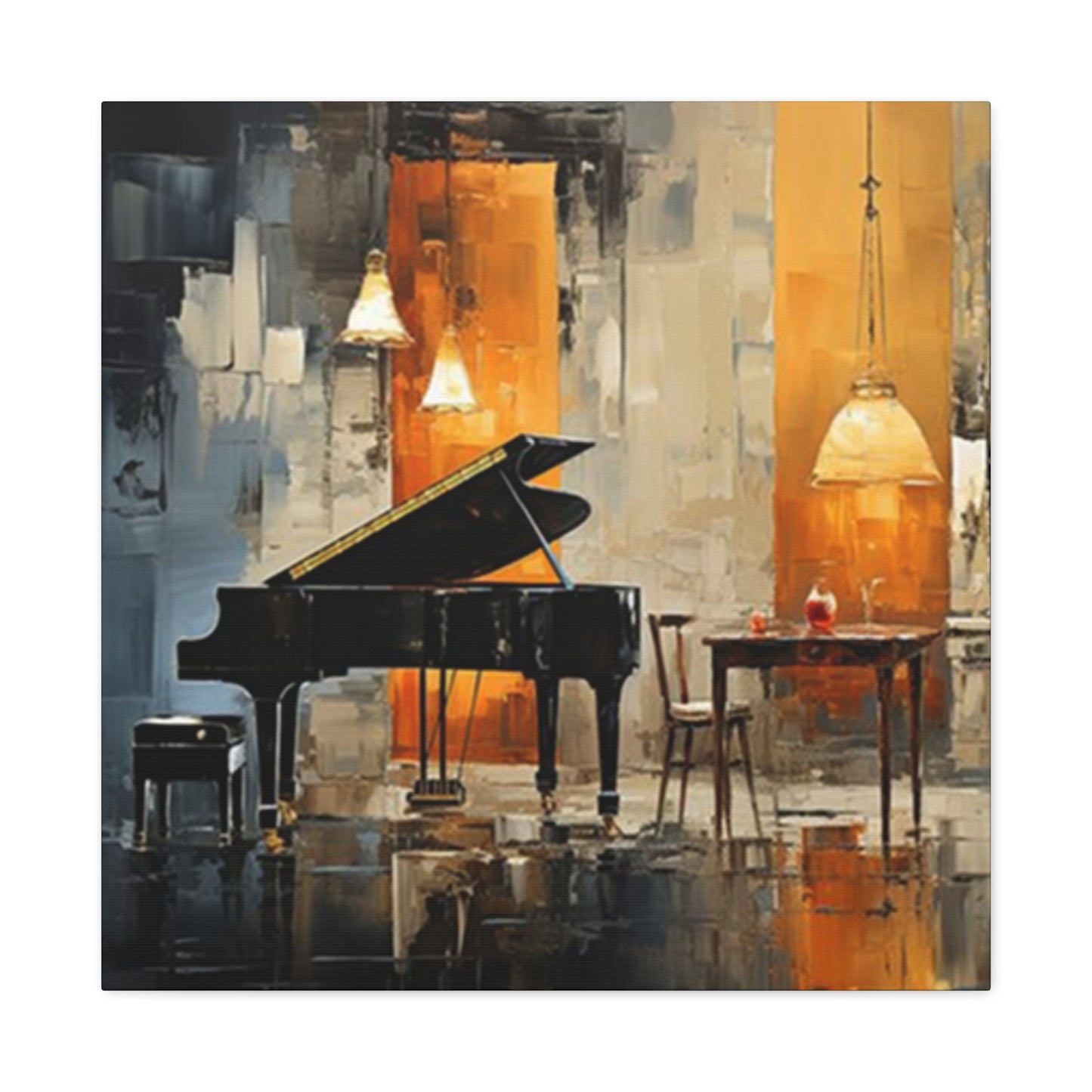
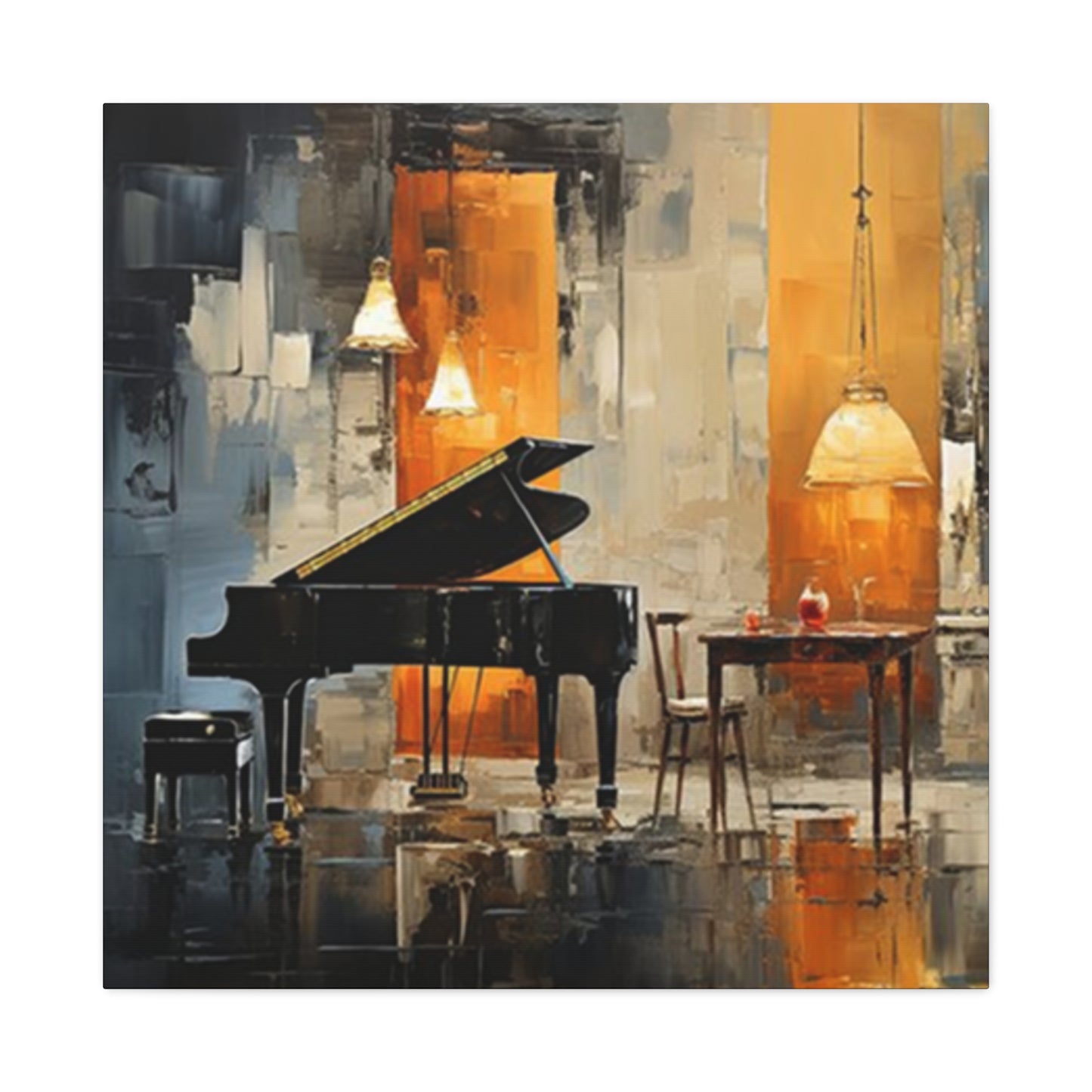
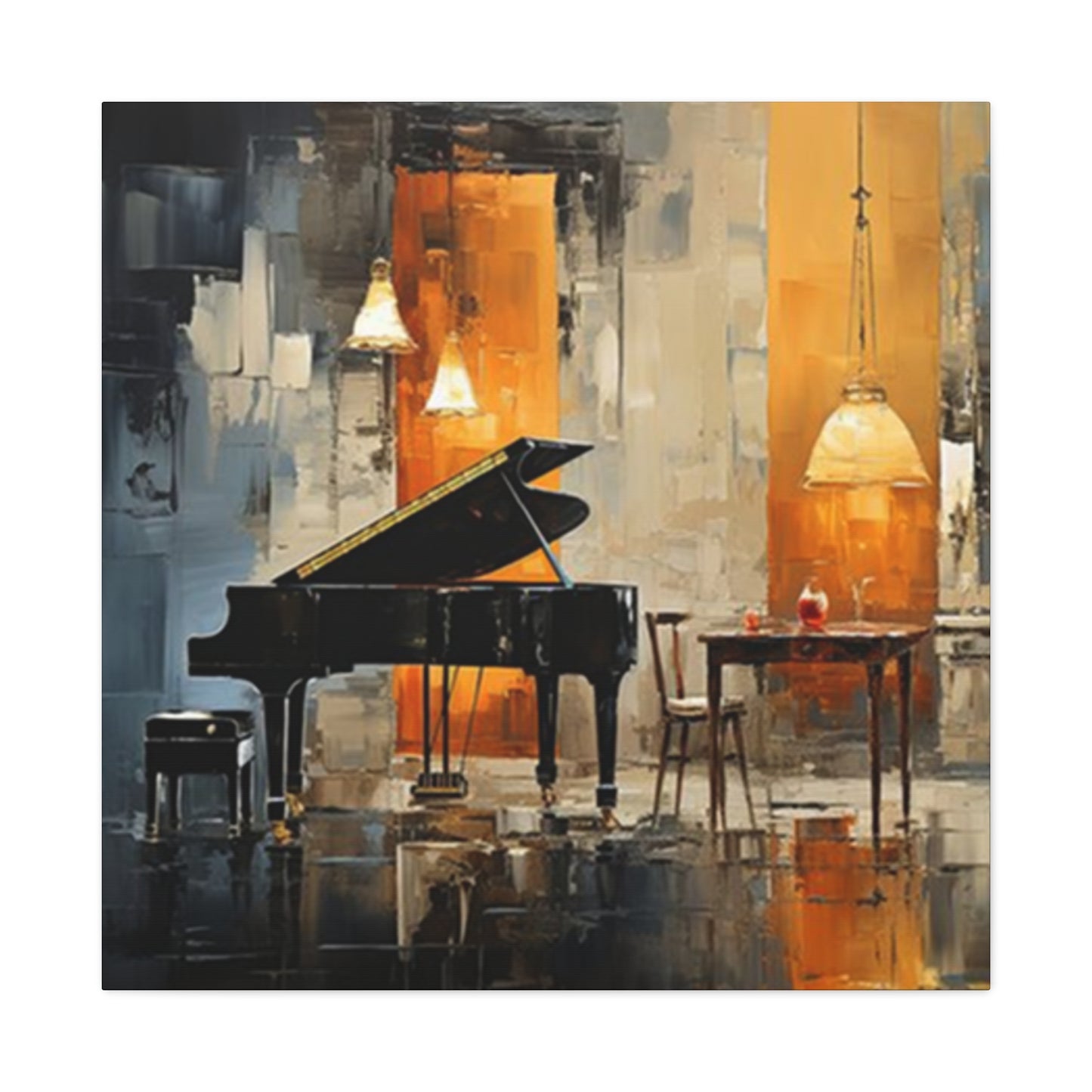
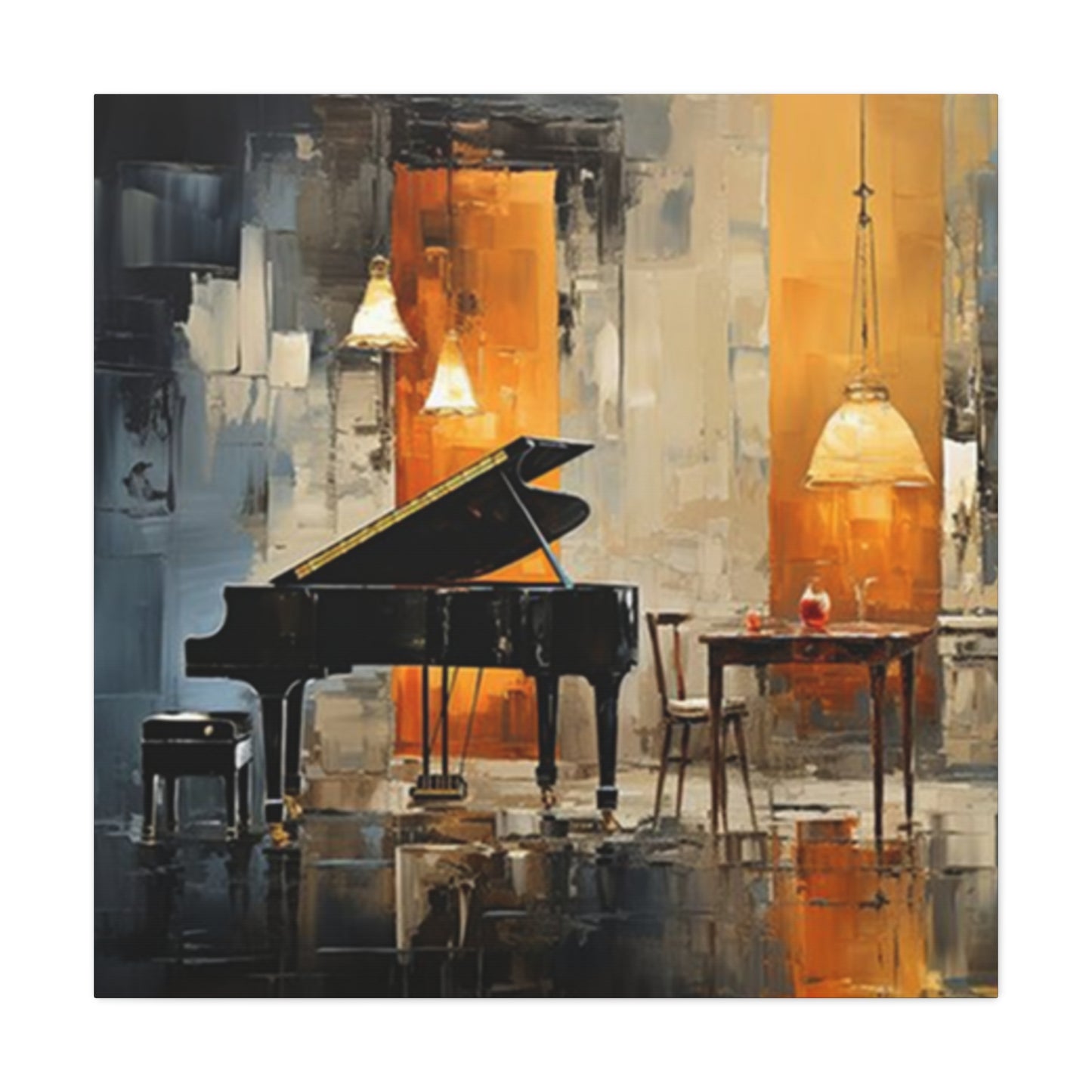
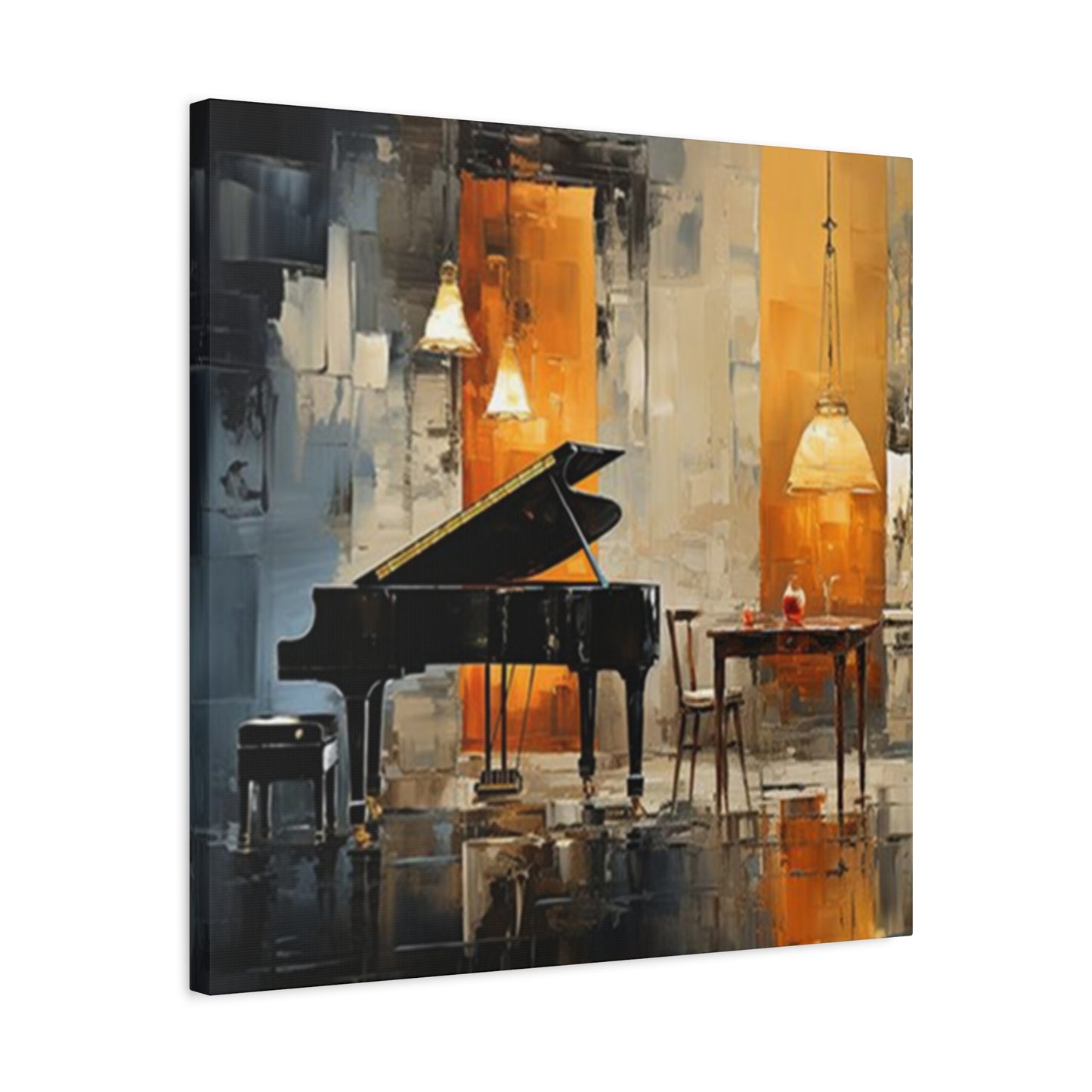
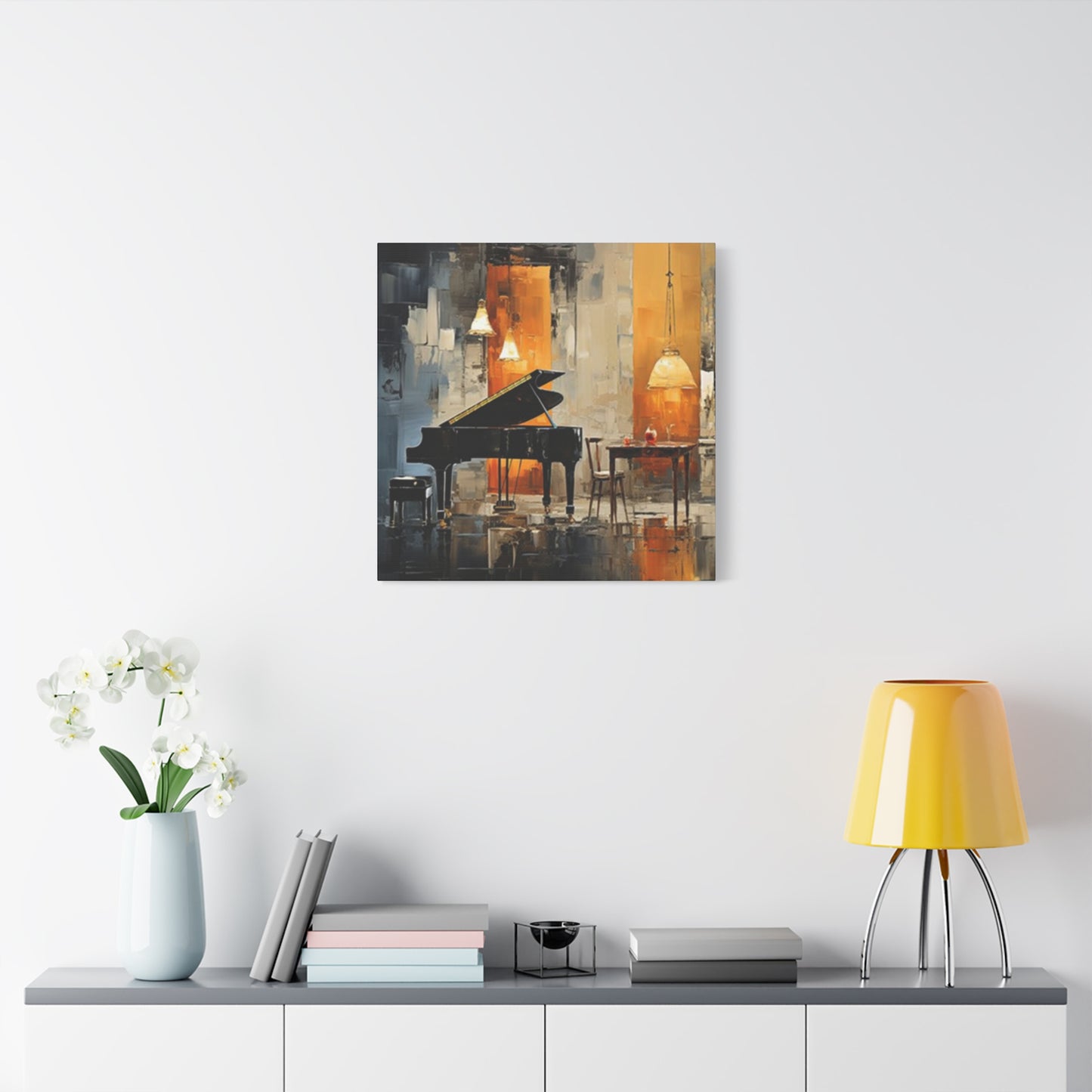
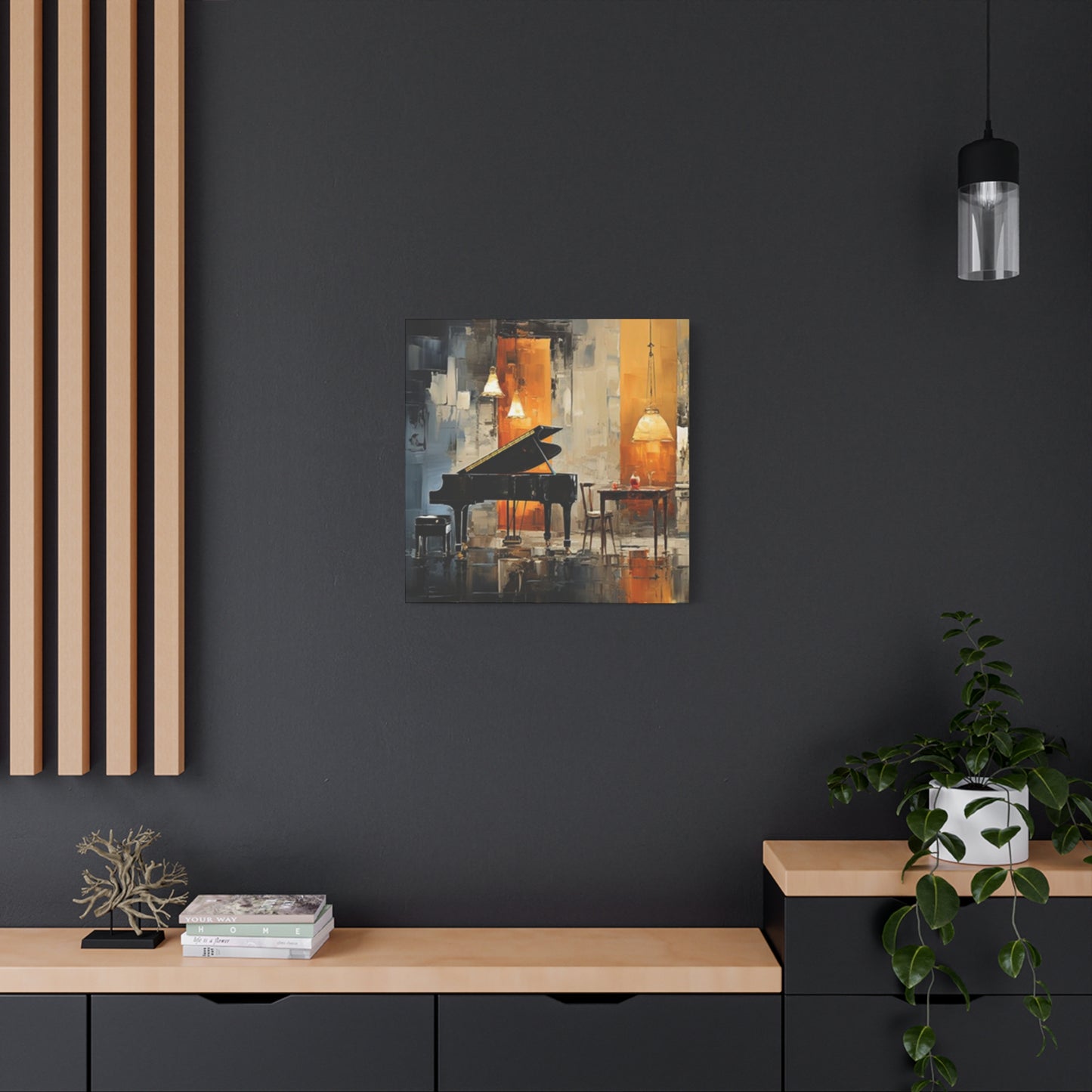
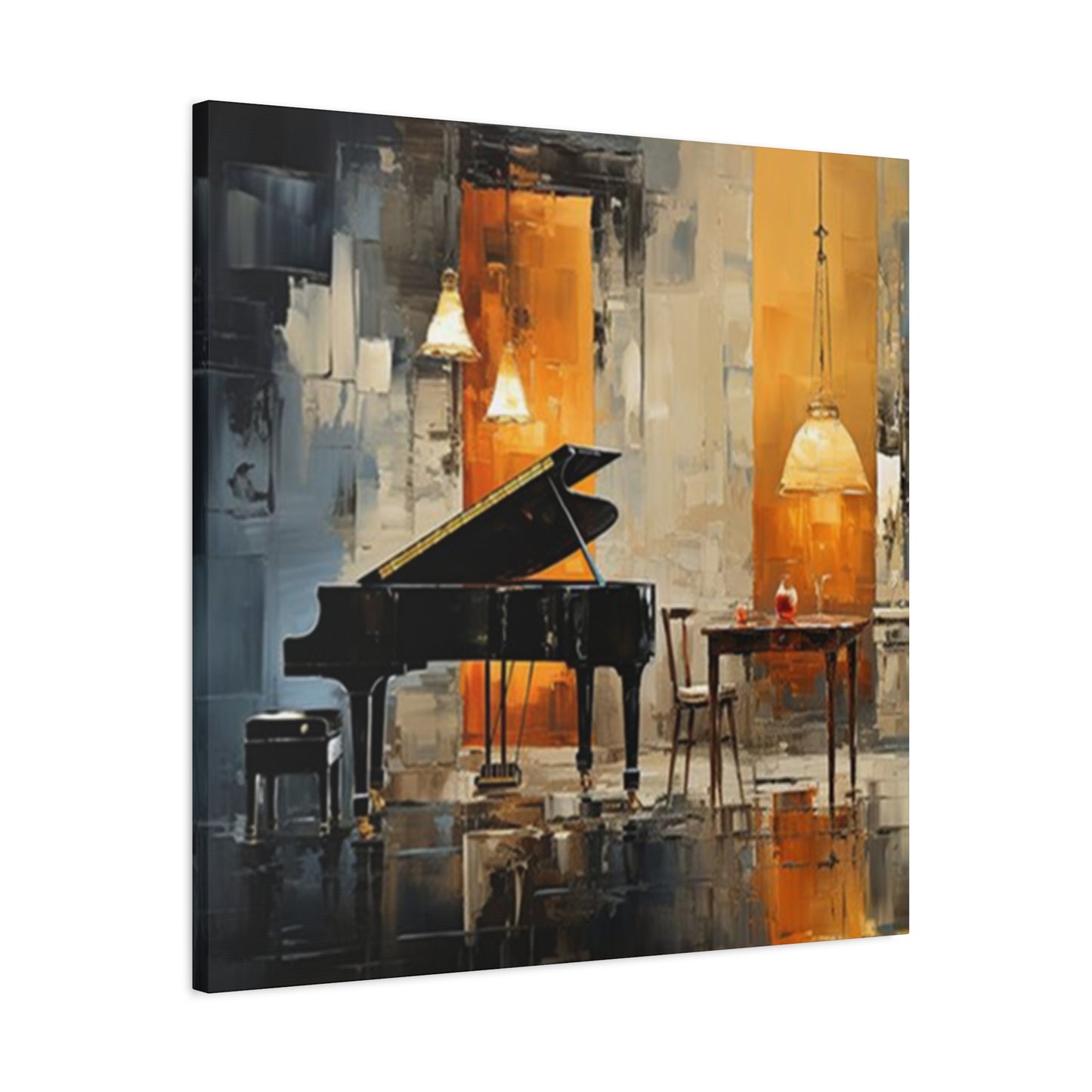
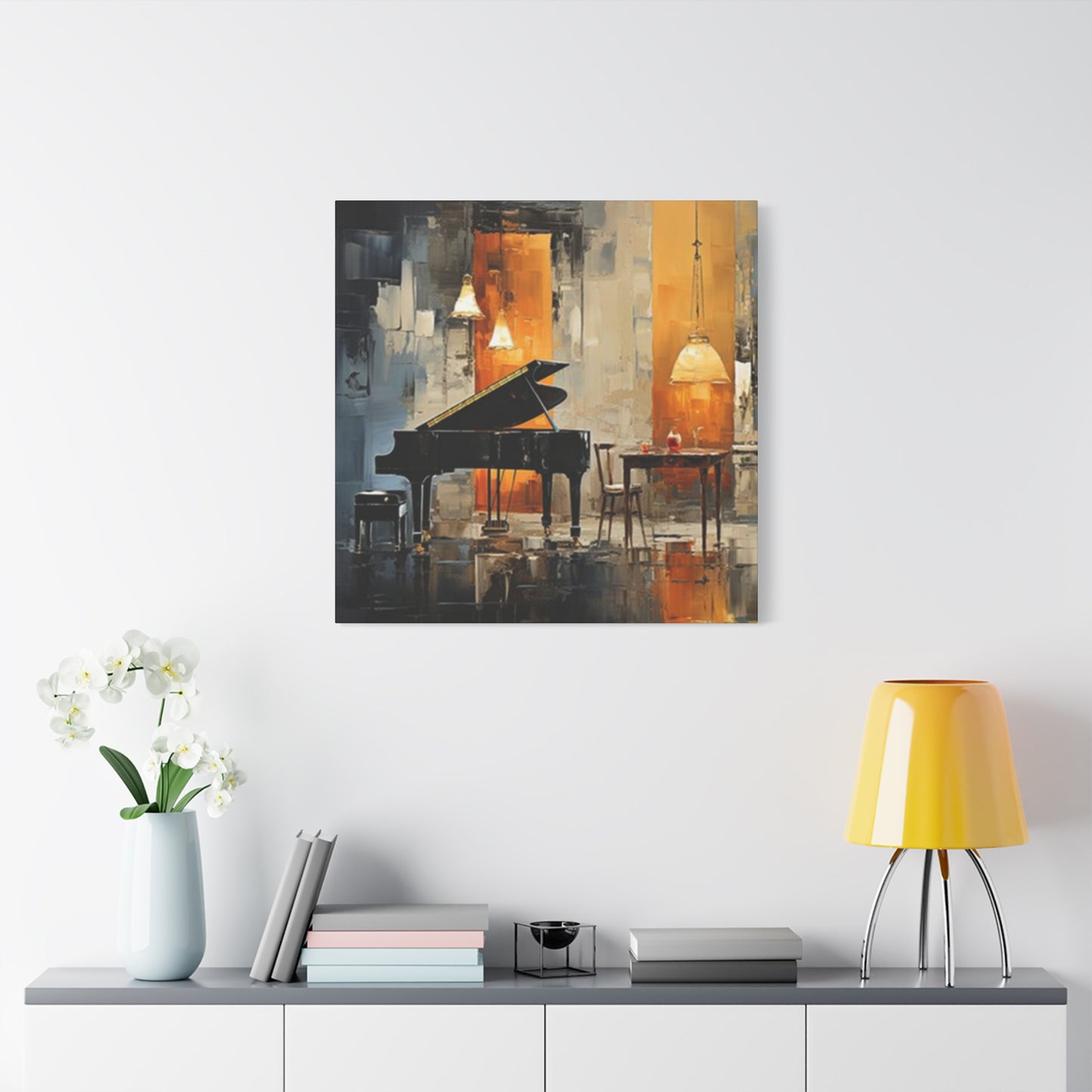
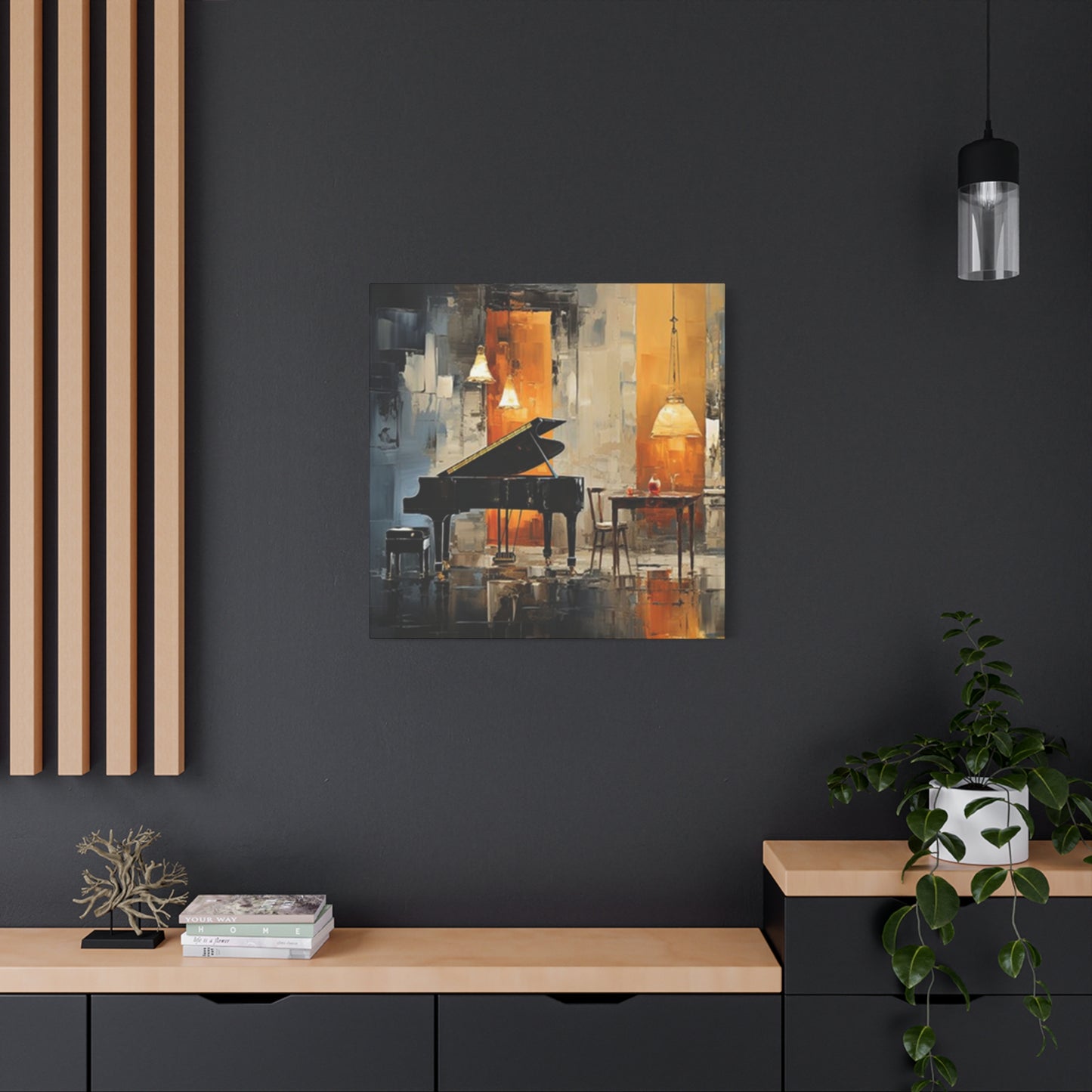
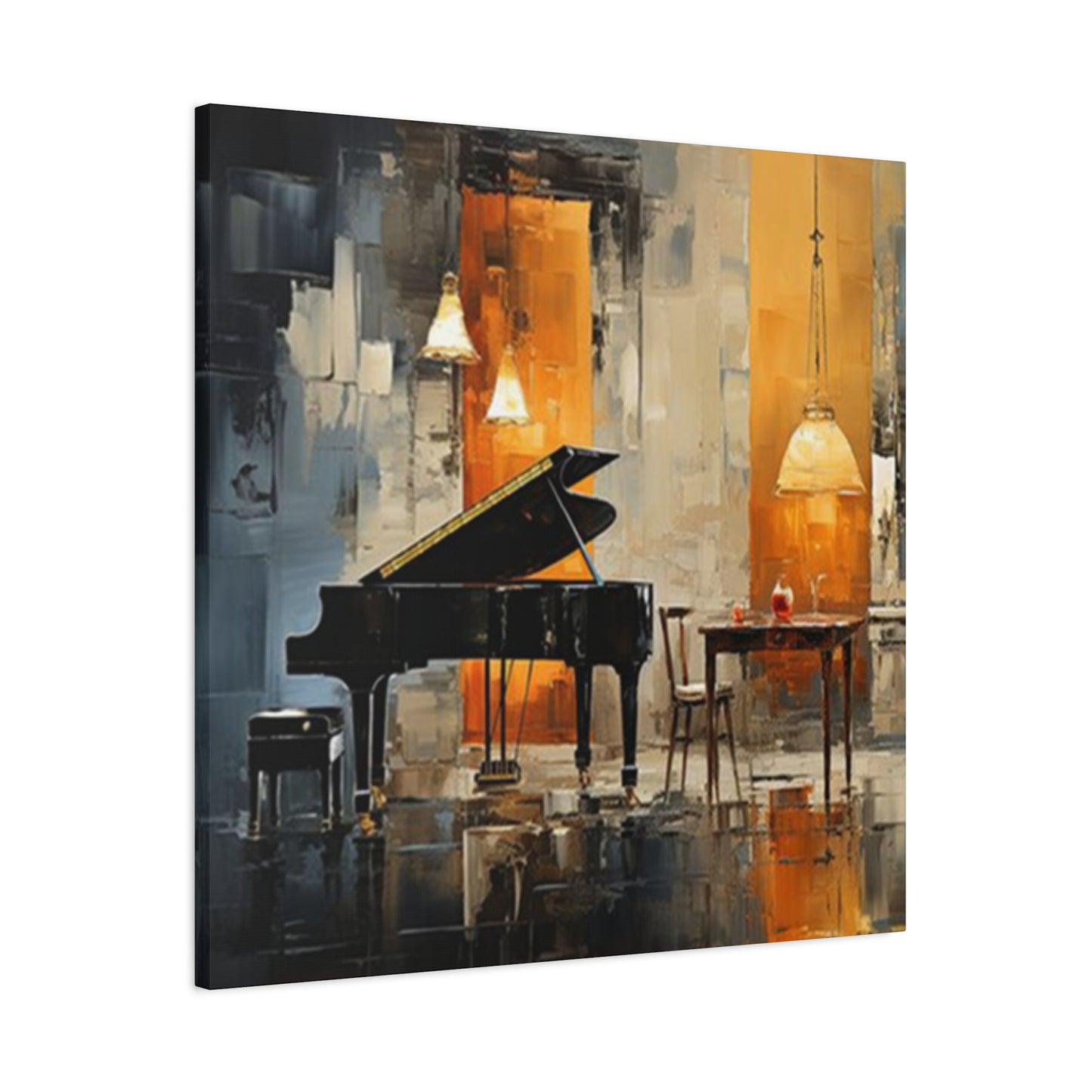

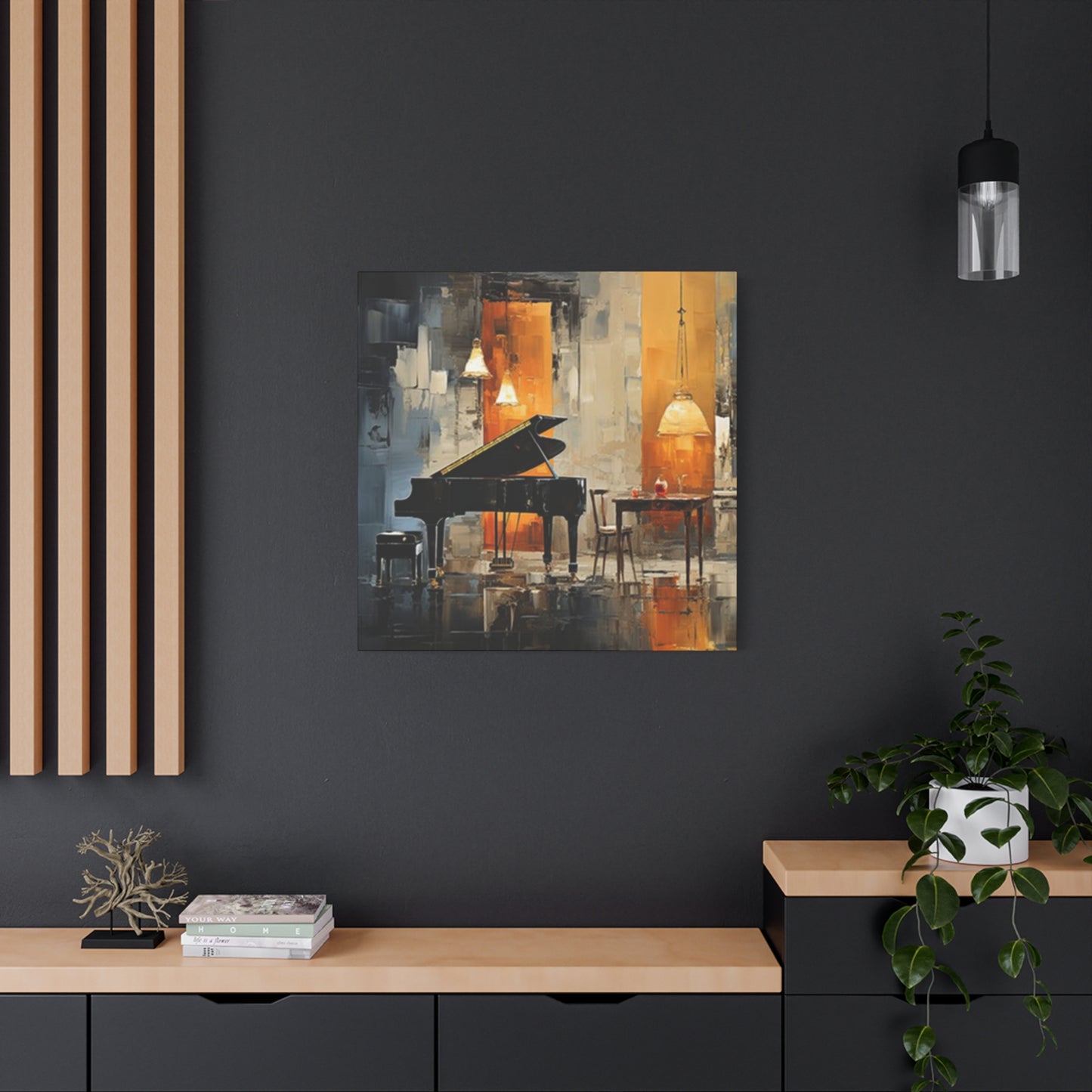
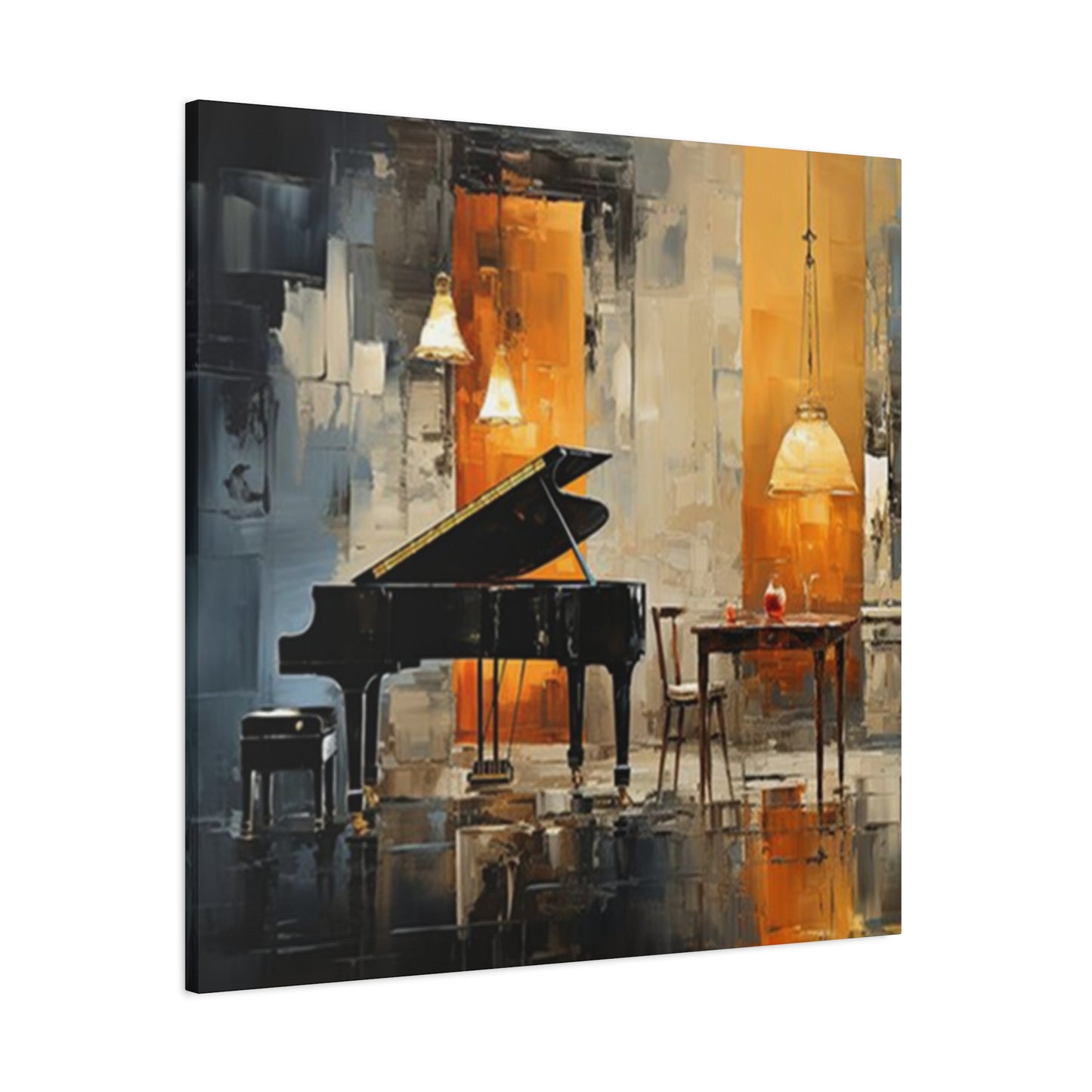

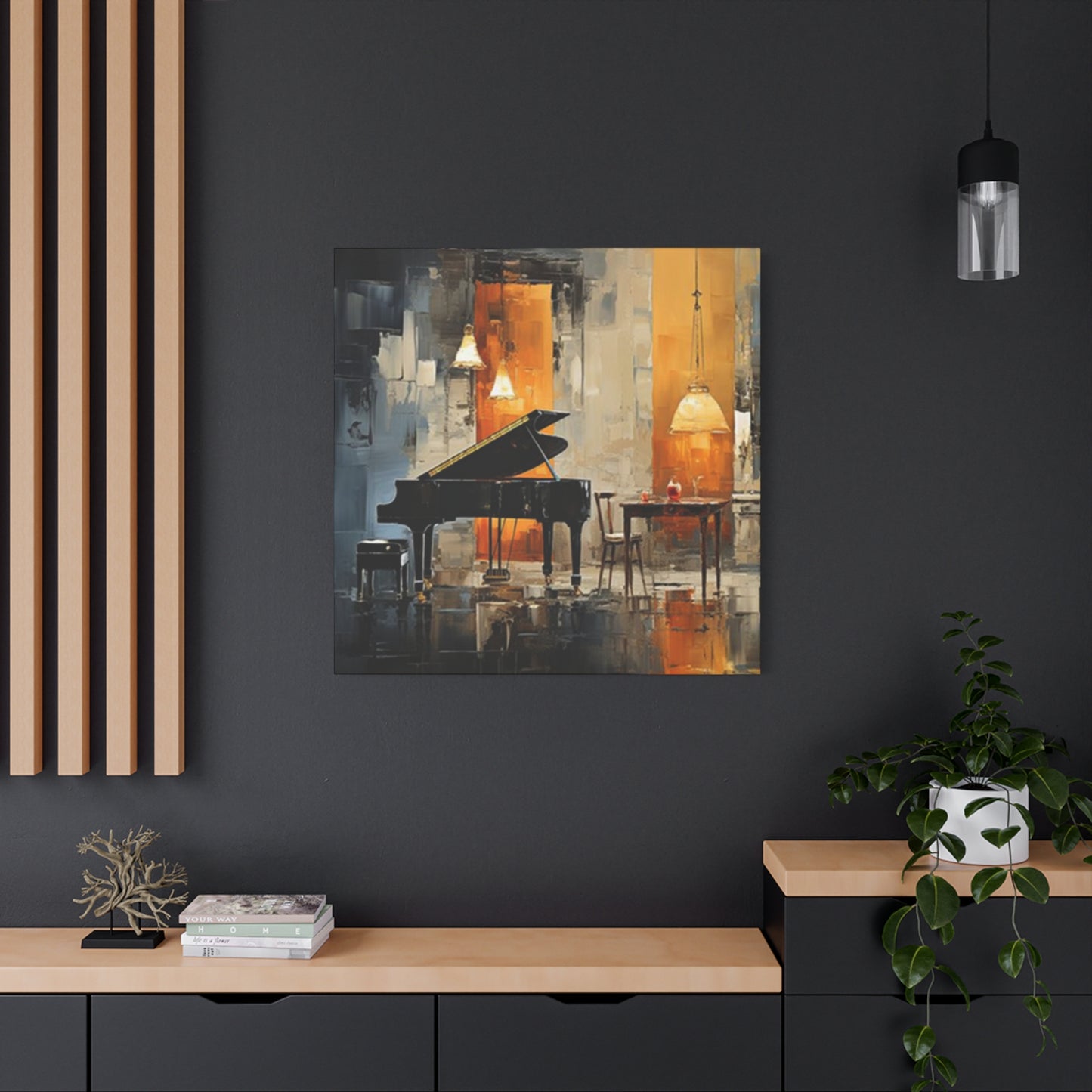
Piano Wall Art Canvas Prints: Elevate Your Space with Musical Masterpieces
Music has always been a powerful force that transcends boundaries and connects people across cultures. Among all musical instruments, the piano holds a special place in the hearts of music lovers worldwide. Its elegant design, sophisticated sound, and rich history make it an ideal subject for artistic expression. Piano wall art has emerged as a popular way to bring the beauty and sophistication of this magnificent instrument into our living spaces. Whether you're a professional musician, a music enthusiast, or simply someone who appreciates beautiful art, piano-themed wall décor can transform any room into a space that radiates creativity, elegance, and musical inspiration.
The world of piano wall art encompasses a vast array of styles, techniques, and artistic interpretations. From realistic depictions of grand pianos to abstract representations of musical notes and keys, these artworks capture the essence of musical expression in visual form. The versatility of piano-themed art makes it suitable for various interior design styles, from classical and traditional to modern and contemporary. This comprehensive exploration delves into the many facets of piano wall art, examining different styles, discussing placement strategies, and providing insights into how these musical masterpieces can enhance your living environment.
Piano Painting Wall Art
Piano painting wall art represents one of the most traditional and beloved forms of musical decoration. These artworks typically feature detailed representations of pianos, capturing every nuance from the gleaming surface of a grand piano to the intricate details of its keyboard and pedals. Artists who specialize in piano paintings often spend considerable time studying the instrument's form, understanding how light reflects off its polished surfaces, and mastering the techniques needed to represent its three-dimensional qualities on a flat canvas.
The appeal of piano painting wall art lies in its ability to bring the grandeur and elegance of this magnificent instrument into any space. A well-executed piano painting can serve as a focal point in a room, drawing the eye and creating a sense of sophistication and cultural refinement. These paintings often evoke feelings of nostalgia, reminding viewers of piano lessons from childhood, memorable concerts, or intimate musical moments shared with loved ones.
Artists approach piano painting from various perspectives. Some focus on photorealistic representations, meticulously capturing every detail with precision and accuracy. These paintings can be so lifelike that viewers might feel as though they could reach out and touch the keys. Other artists take a more impressionistic approach, using bold brushstrokes and vibrant colors to convey the emotional essence of the piano rather than its literal appearance. This style can create dynamic, energetic pieces that seem to pulse with musical rhythm.
The subject matter of piano paintings varies widely. Some feature solitary grand pianos in elegant concert halls, emphasizing the instrument's majesty and the anticipation of musical performance. Others might show pianos in intimate settings, perhaps in a cozy living room or a sunlit conservatory, suggesting the personal connection between music and daily life. Street pianos, vintage uprights, and even abandoned instruments can become subjects for compelling artistic interpretations.
Color palette plays a crucial role in piano painting wall art. While the instrument itself is typically black and white, artists often use the surrounding environment to introduce color and mood. A piano might be set against a backdrop of rich burgundy curtains, bathed in golden stage lights, or surrounded by lush greenery in a garden setting. These color choices can dramatically alter the mood and impact of the artwork, making it suitable for different interior design schemes and personal preferences.
The technique used in piano paintings can vary significantly depending on the artist's style and the desired effect. Oil paintings tend to be favored for their rich, lustrous finish that can effectively capture the glossy surface of a piano. Acrylic paintings offer versatility and vibrant colors, while watercolors can create delicate, ethereal effects that suggest the ephemeral nature of music itself. Mixed media approaches might incorporate actual sheet music, piano wire, or other musical elements into the composition.
Elegant Piano Canvas Prints
Elegant piano canvas prints offer a sophisticated way to incorporate musical themes into interior design without the investment required for original paintings. These high-quality reproductions capture the beauty and detail of original artworks while making piano-themed art accessible to a broader audience. The printing process has evolved significantly in recent years, allowing for exceptional color accuracy, fine detail reproduction, and long-lasting results that can maintain their beauty for decades.
The elegance of piano canvas prints lies not only in their subject matter but also in the printing technology and materials used. Modern giclée printing techniques use archival-quality inks that resist fading, ensuring that the artwork will maintain its vibrancy over time. The canvas itself is typically made from high-quality cotton or linen, providing a texture that closely resembles original paintings. This combination of superior materials and advanced printing technology creates prints that can be virtually indistinguishable from original artworks when viewed from a normal distance.
Elegant piano canvas prints often feature subjects that emphasize the piano's sophisticated nature. Grand pianos in opulent concert halls, intimate piano scenes in Victorian parlors, or minimalist compositions focusing on the instrument's clean lines and elegant proportions are popular choices. The key to elegance in these prints is often restraint - avoiding overly busy compositions or garish colors in favor of refined, tasteful presentations that allow the piano's inherent beauty to shine through.
The sizing options available for piano canvas prints make them suitable for various spaces and applications. Large-format prints can serve as statement pieces in spacious living rooms, music rooms, or professional settings like music schools or performance venues. Medium-sized prints work well in bedrooms, offices, or smaller living spaces where a subtle musical theme is desired. Small prints can be grouped together to create gallery walls or used as accent pieces in unexpected locations like bathrooms or hallways.
The framing and presentation of elegant piano canvas prints deserve careful consideration. While canvas prints can be displayed without traditional frames, many benefit from floating frames or gallery-style presentations that enhance their professional appearance. The choice between black, white, silver, or wooden frames can significantly impact the overall aesthetic, allowing the print to complement different interior design styles and color schemes.
Quality elegant piano canvas prints often feature sophisticated color palettes that work well with upscale interior design. Monochromatic schemes in black, white, and gray can create timeless, classic looks that never go out of style. Sepia tones or other vintage color treatments can add warmth and historical character to a space. More contemporary approaches might incorporate subtle color accents or modern artistic interpretations while maintaining the overall elegance that makes these prints so appealing.
The subject matter selection for elegant piano canvas prints often draws from classical and romantic artistic traditions. Images of grand pianos in prestigious concert venues, historic instruments in period settings, or artistic interpretations that emphasize the piano's cultural significance are common themes. These choices reflect the piano's status as not just a musical instrument but as a symbol of cultural refinement, artistic achievement, and sophisticated taste.
Modern Piano Wall Décor
Modern piano wall décor represents a contemporary approach to incorporating musical themes into interior design. This style breaks away from traditional representations of pianos, instead embracing innovative artistic interpretations, unconventional materials, and cutting-edge design principles. Modern piano wall décor appeals to those who appreciate music but prefer contemporary aesthetics that align with current interior design trends.
The hallmarks of modern piano wall décor include clean lines, minimalist compositions, and often abstract or stylized representations of piano elements. Instead of realistic depictions of entire instruments, modern pieces might focus on specific elements like piano keys, strings, or the geometric patterns created by the instrument's internal structure. These artistic choices reflect broader trends in contemporary art and design that favor simplification, geometric forms, and conceptual approaches over literal representation.
Color plays a crucial role in modern piano wall décor. While traditional piano art often relies on the classic black and white color scheme of the instrument itself, modern interpretations frequently incorporate bold, unexpected colors. Vibrant reds, electric blues, neon greens, or sophisticated metallics might be used to reimagine piano elements in fresh, contemporary ways. These color choices can help piano-themed art integrate seamlessly with modern interior design schemes that emphasize color as a key design element.
Material innovation is another defining characteristic of modern piano wall décor. While canvas remains popular, contemporary artists and designers also work with metal, acrylic, wood, and even digital media to create unique interpretations of piano themes. Metal sculptures might abstract the form of piano strings or keys, creating three-dimensional wall art that casts interesting shadows and changes appearance with varying lighting conditions. Acrylic pieces can incorporate transparency and light effects that would be impossible with traditional painting media.
The scale and proportions of modern piano wall décor often differ from traditional approaches. Oversized prints or installations can create dramatic focal points, while series of smaller pieces might be arranged in geometric patterns or progressive sequences. These scaling choices reflect modern interior design principles that often favor statement pieces or carefully orchestrated groupings over single, moderately-sized artworks.
Digital art and mixed media approaches are particularly common in modern piano wall décor. Artists might combine photographic elements with digital manipulation, creating surreal or fantastical interpretations of piano themes. Mixed media pieces might incorporate actual piano parts, sheet music, or sound-absorbing materials into wall installations that blur the line between visual art and functional design elements.
The integration of technology into modern piano wall décor represents an exciting frontier in artistic expression. Interactive pieces might respond to sound or touch, LED elements could create dynamic lighting effects, or digital displays might show evolving compositions related to piano music. These technological integrations appeal to modern audiences who expect art to engage with contemporary life and current technological possibilities.
Modern piano wall décor often emphasizes the mathematical and geometric aspects of music theory. Artistic interpretations might visualize musical scales, chord progressions, or rhythmic patterns in abstract geometric forms. These intellectual approaches to piano-themed art appeal to viewers who appreciate both music and mathematics, creating pieces that function on multiple levels of understanding and appreciation.
The placement and arrangement of modern piano wall décor in contemporary spaces requires careful consideration of the overall design aesthetic. These pieces work particularly well in minimalist interiors where they can serve as focal points without competing with busy décor elements. Open-plan living spaces, modern offices, and contemporary music venues are ideal settings for modern piano wall décor that can complement rather than conflict with architectural features and furniture choices.
Beautiful Piano Artwork on Canvas
Beautiful piano artwork on canvas encompasses a broad category of artistic expressions that celebrate the piano through various artistic styles and techniques. The beauty in these works often lies not just in their subject matter but in the skill, creativity, and passion that artists bring to their interpretation of this beloved instrument. Canvas as a medium offers unique advantages for piano artwork, providing texture, durability, and a surface that can accommodate various painting techniques while maintaining the artwork's integrity over time.
The concept of beauty in piano artwork is subjective and can manifest in many different ways. Some find beauty in photorealistic representations that capture every detail of a piano with stunning accuracy. Others are moved by impressionistic interpretations that use color, light, and brushwork to convey the emotional essence of musical expression. Abstract approaches might find beauty in the geometric forms, patterns, and rhythms suggested by piano music itself, translating auditory experiences into visual compositions.
Canvas provides an ideal surface for creating beautiful piano artwork because of its versatility and traditional association with fine art. The texture of canvas can add depth and interest to piano paintings, allowing artists to create effects that would be difficult to achieve on smoother surfaces. The tooth of the canvas can catch paint in ways that create subtle variations in color and tone, adding richness and complexity to the final artwork. This textural quality is particularly important for piano artwork, as it can help suggest the various surfaces and materials that make up the instrument itself.
Beautiful piano artwork on canvas often explores the relationship between visual and auditory art forms. Artists might attempt to translate the rhythms, harmonies, and melodies of piano music into visual compositions through color choices, compositional structure, and brushwork techniques. A flowing, lyrical piano piece might inspire flowing brushstrokes and soft color transitions, while a dramatic, powerful composition might be reflected in bold colors and dynamic compositional elements.
The lighting in beautiful piano artwork on canvas deserves special attention. Pianos, especially grand pianos, have highly reflective surfaces that interact with light in complex ways. Artists must understand how light behaves on these surfaces to create convincing and beautiful representations. The interplay between light and shadow can dramatically affect the mood and impact of piano artwork, with dramatic lighting creating more emotional and dynamic pieces, while soft, even lighting might create more peaceful and contemplative works.
The setting and context in which pianos are depicted can significantly impact the beauty and meaning of canvas artwork. A grand piano in an elegant concert hall suggests formality, performance, and public artistry. A piano in a home setting might evoke intimacy, personal expression, and the role of music in daily life. Outdoor settings, abandoned pianos, or pianos in unexpected locations can create intriguing narratives and emotional responses that add layers of meaning to the artwork.
Color harmony plays a crucial role in creating beautiful piano artwork on canvas. While pianos themselves are typically black and white, artists have complete freedom in choosing colors for backgrounds, lighting effects, and atmospheric elements. Complementary color schemes can create vibrant, energetic pieces, while analogous colors might produce more harmonious, peaceful effects. The emotional associations of different colors can be used to enhance the musical themes of the artwork, with warm colors suggesting passionate music and cool colors evoking more contemplative or melancholic moods.
The scale and proportions of beautiful piano artwork on canvas can vary widely depending on the intended use and artistic vision. Large-scale canvases can create immersive experiences that make viewers feel as though they could step into the musical world depicted. Smaller canvases might focus on intimate details or create more personal, contemplative viewing experiences. The choice of scale should consider both the artistic vision and the intended display environment.
Abstract Piano Painting Wall Art
Abstract piano painting wall art represents a fascinating intersection between musical and visual arts, where artists move beyond literal representation to explore the emotional, rhythmic, and structural elements that make piano music so compelling. This artistic approach allows for tremendous creative freedom, enabling artists to interpret the essence of piano music through color, form, texture, and composition in ways that purely representational art cannot achieve.
The foundation of abstract piano painting lies in the translation of musical concepts into visual elements. Artists might represent the rhythm of a piano piece through repeated geometric shapes or flowing lines. Harmony could be suggested through complementary color relationships or balanced compositional elements. The dynamics of piano music, from soft whispers to thunderous crescendos, might be expressed through variations in color intensity, brushstroke energy, or scale relationships within the composition.
Color becomes a particularly powerful tool in abstract piano painting wall art. Artists are freed from the constraints of realistic color representation, allowing them to use color purely for its emotional and symbolic properties. The contrast between black and white keys might inspire monochromatic compositions that explore the relationship between opposing forces. Alternatively, artists might use vibrant, unrealistic colors to represent the emotional content of piano music, with warm reds and oranges suggesting passionate pieces and cool blues and purples evoking more contemplative works.
The compositional structure of abstract piano paintings often reflects musical structures. Artists might organize their compositions around visual rhythms that echo musical rhythms, creating patterns that repeat, vary, and develop across the canvas surface. The concept of musical phrases might be represented through visual elements that begin, develop, and resolve within the composition. Even complex musical forms like sonatas or fugues might inspire equally complex visual compositions that unfold and develop according to similar structural principles.
Texture plays a crucial role in abstract piano painting wall art, offering another dimension for artistic expression. Heavy impasto techniques might suggest the physical action of piano playing, with thick paint application echoing the force required to create powerful musical passages. Smooth, flowing textures might represent the seamless connection between notes in a legato passage. Mixed media approaches might incorporate actual sheet music, piano wire, or other materials to add literal musical elements to abstract compositions.
The emotional content of piano music provides rich inspiration for abstract painting approaches. Artists might attempt to visualize the feelings evoked by specific pieces or composers, creating visual equivalents for the emotional journey that piano music can provide. A melancholic nocturne might inspire muted colors and flowing forms, while a energetic étude could result in dynamic, angular compositions filled with movement and energy.
Scale and proportion in abstract piano painting wall art can be used to create different types of viewing experiences. Large-scale abstract works can create immersive environments that surround viewers with musical energy and emotion. These pieces work particularly well in spaces where people spend extended time, such as living rooms, music rooms, or professional waiting areas. Smaller abstract piano paintings might function more like visual haikus, capturing a single musical moment or emotion in concentrated form.
The interpretation of piano techniques and playing methods provides another rich source of inspiration for abstract artists. The concept of counterpoint, where multiple independent musical lines weave together, might be represented through overlapping abstract forms or intersecting color fields. Pedaling techniques that blur the boundaries between notes might inspire soft, atmospheric effects in paint application. The physical gesture of playing, from delicate finger work to full-arm movements, could be captured through corresponding brushwork techniques and mark-making strategies.
Abstract piano painting wall art often works particularly well in contemporary interior design settings where it can complement modern furniture and architectural elements without competing for attention through literal representation. These pieces can serve as sophisticated focal points that add color, energy, and cultural depth to a space while maintaining the clean, uncluttered aesthetic that many contemporary design approaches favor.
Colorful Piano Canvas Wall Prints
Colorful piano canvas wall prints bring vibrancy and energy to musical-themed interior design, breaking away from the traditional black and white color palette associated with pianos to create dynamic, engaging artworks. These pieces demonstrate how color can transform our perception of familiar subjects, making piano art accessible to a broader range of design styles and personal preferences while maintaining the sophisticated associations of musical themes.
The use of color in piano canvas wall prints serves multiple purposes beyond mere decoration. Color can convey emotion, create mood, establish atmosphere, and guide the viewer's eye through the composition. In the context of piano art, color choices might reflect the emotional content of specific musical pieces, the energy of different musical styles, or the artist's personal interpretation of what piano music represents. Vibrant reds might suggest passionate, dramatic music, while soft pastels could evoke gentle lullabies or peaceful interludes.
The psychological impact of colorful piano canvas wall prints should not be underestimated. Color has been shown to affect mood, productivity, and overall well-being. A colorful piano print in a workspace might inspire creativity and energy, while softer, more muted colorful interpretations in a bedroom might promote relaxation and peaceful sleep. The ability to choose piano-themed art in colors that complement both personal preferences and functional needs makes these prints valuable additions to various living and working environments.
Color theory principles play an important role in creating effective colorful piano canvas wall prints. Complementary color schemes, using colors opposite each other on the color wheel, can create vibrant, energetic pieces that command attention. Analogous color schemes, using colors adjacent to each other on the color wheel, can create more harmonious, soothing effects. Triadic color schemes, using three colors equally spaced on the color wheel, can create balanced yet dynamic compositions. Understanding these principles helps both artists and consumers make informed choices about colorful piano art.
The application of color to piano imagery can take many different approaches. Some artists might maintain the realistic form of the piano while changing its colors to unexpected hues - imagine a bright red grand piano or a piano with rainbow-colored keys. Others might use color more abstractly, surrounding realistic piano imagery with colorful backgrounds or atmospheric effects. Still others might break down the piano form entirely, using its recognizable elements like keys or strings as starting points for purely colorful, abstract compositions.
Digital printing technology has made colorful piano canvas wall prints more accessible and affordable than ever before. Modern printing techniques can reproduce subtle color gradations, vibrant saturated hues, and complex color interactions with remarkable accuracy. This technological advancement means that artists can create highly sophisticated colorful compositions knowing that their color intentions will be faithfully reproduced in the final prints available to consumers.
The durability of color in modern canvas prints has improved significantly with advances in ink technology. UV-resistant inks ensure that colorful piano prints will maintain their vibrancy even when exposed to natural light over extended periods. This improvement in permanence makes colorful prints a wise investment for long-term interior design applications, as their appearance will remain stable for many years with proper care and placement.
Colorful piano canvas wall prints work particularly well in modern and contemporary interior design schemes that embrace color as a key design element. These prints can serve as the starting point for entire room color schemes, with furniture, accessories, and other decorative elements chosen to complement the colors in the artwork. Alternatively, they can provide colorful accents in more neutral spaces, adding energy and interest without overwhelming the overall design aesthetic.
The emotional associations of different colors can be strategically used in colorful piano canvas wall prints to create desired atmospheres in different spaces. Warm colors like reds, oranges, and yellows can create welcoming, energetic environments suitable for social spaces like living rooms and kitchens. Cool colors like blues, greens, and purples can promote calm and concentration, making them ideal for bedrooms, offices, or meditation spaces. The versatility of colorful piano prints means that the same subject matter can be adapted to serve different functional and emotional needs through color choices.
Classic Piano Music Wall Art
Classic piano music wall art celebrates the rich tradition and timeless appeal of classical piano repertoire through visual representation. This category of musical artwork draws inspiration from the golden age of classical music, the great composer-pianists who shaped the instrument's repertoire, and the elegant concert culture that surrounds classical piano performance. These artworks often evoke a sense of history, sophistication, and cultural refinement that appeals to classical music enthusiasts and those who appreciate traditional artistic values.
The imagery in classic piano music wall art often reflects the formal, elegant world of classical music performance. Grand pianos in prestigious concert halls, with their gleaming surfaces and perfect positioning, represent the pinnacle of musical artistry and performance standards. These settings suggest the importance of classical music in cultural life and the respect accorded to serious musical expression. The artwork might include details like ornate architectural elements, formal dress codes, or the ritual aspects of classical performance that distinguish it from more casual musical experiences.
Historical elements frequently appear in classic piano music wall art, connecting contemporary viewers with the rich heritage of piano music. Artists might depict vintage instruments, period costumes, historical performance venues, or even imagined scenes of famous composers at work. These historical references create a sense of continuity between past and present, suggesting that appreciation for classical piano music represents participation in an ongoing cultural tradition that spans generations.
The color palettes used in classic piano music wall art often reflect traditional artistic approaches and the formal nature of classical music performance. Rich, deep colors like burgundy, gold, deep blue, and forest green create sophisticated, dignified atmospheres appropriate to the subject matter. Black and white compositions can emphasize the timeless, elegant nature of classical piano music while creating dramatic, high-contrast effects that draw attention to important compositional elements.
The technical execution of classic piano music wall art often emphasizes craftsmanship and attention to detail, reflecting the precision and technical mastery required in classical piano performance. Artists might spend considerable time perfecting the representation of piano details, the play of light on polished surfaces, or the subtle expressions of performers caught in moments of musical inspiration. This emphasis on technical excellence creates artworks that reward close examination and appreciation for artistic skill.
Classic piano music wall art often incorporates symbolic elements that reference specific aspects of classical music tradition. Sheet music, metronomes, musical notation, candles or period lighting, and even representations of famous composers might appear within compositions. These elements add layers of meaning for knowledgeable viewers while creating rich, complex compositions that offer new discoveries upon repeated viewing.
The portrayal of human figures in classic piano music wall art deserves special consideration. Pianists might be shown in moments of intense concentration, hands poised above keys in preparation for performance, or caught in the physical expression of musical passion. These human elements connect viewers emotionally with the music, suggesting the personal dedication and artistic expression that classical piano performance represents. The clothing, posture, and expression of figures can convey information about historical periods, performance contexts, and the social significance of classical music.
The architectural and environmental contexts shown in classic piano music wall art contribute significantly to the overall impression and meaning of these works. Elegant concert halls with their formal seating arrangements and acoustic considerations suggest the public, ceremonial aspects of classical performance. Intimate salon settings might evoke the more personal, chamber music traditions of classical piano literature. Home environments could represent the domestic cultivation of musical skills and appreciation that has always been central to classical music culture.
Classic piano music wall art serves multiple functions in interior design applications. In formal settings like law offices, upscale restaurants, or traditional homes, these artworks can reinforce impressions of sophistication, cultural awareness, and good taste. In music-related environments like piano studios, music schools, or performance venues, classic piano art can inspire students and performers while creating appropriate atmospheric contexts for serious musical work.
Black and White Piano Painting Canvas
Black and white piano painting canvas represents one of the most elegant and timeless approaches to musical artwork. By working within the monochromatic color scheme that naturally reflects the piano keyboard itself, artists can create powerful, sophisticated pieces that emphasize composition, contrast, value relationships, and emotional expression without the complexity of color relationships. This artistic approach often results in pieces with universal appeal that can complement a wide range of interior design styles and personal preferences.
The inherent drama of black and white composition makes it particularly well-suited to piano artwork. The high contrast between these opposing values can create striking visual effects that mirror the dynamic range of piano music itself. Just as piano music can move from the softest whisper to thunderous fortissimo, black and white artwork can explore the full range from pure white to deep black, with countless shades of gray providing subtle gradations and transitions between the extremes.
The technical challenges of working in black and white require artists to master value relationships and understand how different tones interact within a composition. Without color to provide interest and guide the eye, artists must rely on careful manipulation of light and shadow, texture, and compositional structure to create engaging, successful artworks. This constraint often leads to more thoughtful, carefully considered compositions that demonstrate sophisticated understanding of fundamental artistic principles.
Black and white piano painting canvas can explore various artistic styles and approaches while maintaining its monochromatic character. Photorealistic representations might focus on capturing the precise interplay of light and shadow on piano surfaces, creating almost photographic accuracy in paint. Impressionistic approaches might use bold brushwork and varied textures to suggest the energy and movement of musical performance while maintaining the black and white color constraint. Abstract interpretations might reduce piano forms to essential geometric shapes and value relationships.
The psychological impact of black and white artwork should not be underestimated. These pieces often convey a sense of timelessness, elegance, and sophisticated restraint that colored artworks might not achieve. The absence of color can focus attention more intensely on the subject matter itself, creating more contemplative, meditative viewing experiences. In interior design applications, black and white piano paintings can serve as sophisticated focal points that complement rather than compete with other colorful elements in a room.
The historical associations of black and white artwork add another layer of meaning to piano paintings created in this style. Black and white recalls the tradition of fine art drawing, printmaking, and early photography, connecting contemporary piano paintings with established artistic traditions. This historical resonance can make black and white piano art particularly appealing to viewers who appreciate traditional artistic values and classical approaches to art-making.
The versatility of black and white piano painting canvas makes it suitable for various interior design applications. In minimalist or contemporary settings, the clean simplicity of monochromatic art can complement uncluttered design aesthetics. In traditional interiors, black and white paintings can provide sophisticated accents that respect classical design principles. The neutral nature of black and white means these artworks can easily adapt to changing décor without becoming dated or stylistically inappropriate.
Lighting considerations become particularly important when displaying black and white piano painting canvas. Proper lighting can enhance the contrast and drama inherent in monochromatic work, while poor lighting can flatten the image and reduce its impact. Natural light, track lighting, or picture lights should be positioned to avoid glare while ensuring that the full range of values is visible to viewers. The reflective qualities of canvas and any protective glazing should also be considered to optimize viewing conditions.
The framing and presentation of black and white piano painting canvas can significantly affect the final visual impact. Simple, elegant frames in black, white, or metallic finishes often work best, avoiding competition with the artwork itself. The choice between matting and direct mounting, as well as decisions about glazing, should consider both protection and visual presentation needs. Professional presentation can elevate black and white piano art from simple decoration to significant artistic statements.
Vintage Piano Wall Art Prints
Vintage piano wall art prints capture the nostalgic charm and historical significance of pianos from bygone eras, celebrating the instrument's evolution and its central role in domestic and public music-making throughout history. These prints often evoke feelings of nostalgia, connecting contemporary viewers with earlier periods when piano music played an even more central role in social and cultural life. The vintage aesthetic appeals to those who appreciate historical design elements and the romantic notion of musical traditions passed down through generations.
The subject matter of vintage piano wall art prints typically features instruments, settings, and contexts from earlier historical periods. Victorian parlor pianos with their ornate wooden cases and elaborate decorative details represent the height of domestic musical culture in the 19th century. Upright pianos in family settings suggest the important role these instruments played in home entertainment before the advent of recorded music. Player pianos and other mechanical musical instruments represent fascinating chapters in the history of musical technology and automation.
The aesthetic qualities that define vintage piano wall art prints include carefully chosen color palettes that suggest age and historical authenticity. Sepia tones, muted earth colors, and deliberately faded appearances can create the impression of historical photographs or aged paintings. Distressed effects, vintage typography, and period-appropriate decorative elements further enhance the nostalgic appeal. These design choices work together to create artworks that feel like genuine historical artifacts even when they are contemporary creations.
The printing techniques used for vintage piano wall art prints often incorporate deliberate imperfections and irregularities that suggest age and handcrafted production methods. Slightly uneven color distribution, subtle texture variations, and gentle edge effects can make modern prints appear to have the character of vintage originals. Advanced digital printing technology allows artists to incorporate these vintage effects while maintaining the quality and durability expected in contemporary wall art.
The emotional appeal of vintage piano wall art prints lies in their ability to evoke specific memories and associations. Many people have childhood memories of piano lessons, family sing-alongs around an upright piano, or visits to grandparents' homes where old pianos held places of honor in formal parlors. Vintage piano art can trigger these positive associations, creating warm, comforting feelings that enhance the emotional atmosphere of a space.
The historical accuracy of vintage piano wall art prints varies depending on the artist's intentions and target audience. Some prints strive for museum-quality historical accuracy, carefully researching period details to create authentic representations of specific time periods and piano models. Others take a more romanticized approach, combining historical elements in ways that create appealing compositions without strict adherence to historical reality. Both approaches can be valid, depending on whether the primary goal is historical education or decorative appeal.
The cultural context depicted in vintage piano wall art prints often reflects the social significance of piano music in earlier periods. Formal recitals, family gatherings around the piano, music lessons in elegant parlors, and public performances in grand venues all represent aspects of musical culture that may seem distant from contemporary digital music experiences. These depictions can serve as reminders of more communal, participatory approaches to musical enjoyment.
The integration of vintage piano wall art prints into contemporary interior design requires careful consideration of both the historical aesthetic of the artwork and the overall design goals of the space. These prints work particularly well in traditional, eclectic, or shabby chic design schemes that already incorporate vintage or antique elements. However, they can also provide interesting contrast in more contemporary settings, adding historical depth and character to otherwise modern environments.
The sizing and placement of vintage piano wall art prints should consider both the scale of the historical scenes depicted and the proportions of the contemporary space. Large prints showing grand pianos in elegant Victorian parlors might work best in spacious, formally decorated rooms. Smaller prints featuring intimate piano scenes could be appropriate for bedrooms, home offices, or reading nooks where their nostalgic charm can be appreciated at closer viewing distances.
Stylish Piano Canvas Wall Décor
Stylish piano canvas wall décor represents a contemporary approach to musical artwork that emphasizes sophisticated design sensibilities, current aesthetic trends, and fashionable presentation. This category of piano art appeals to design-conscious consumers who want to incorporate musical themes into their spaces while maintaining cutting-edge style and visual appeal. The emphasis on style means these pieces often reflect current trends in color, composition, and artistic technique while maintaining the timeless appeal of piano imagery.
The definition of "stylish" in piano canvas wall décor can encompass various contemporary aesthetic approaches. Minimalist interpretations might reduce piano forms to their essential geometric elements, creating clean, uncluttered compositions that align with modern design principles. High-fashion influences might incorporate bold color choices, dramatic lighting effects, or glamorous settings that suggest luxury and sophistication. Industrial or urban styling might place pianos in unexpected contemporary contexts, creating intriguing juxtapositions between classical instruments and modern environments.
Color trends play a significant role in stylish piano canvas wall décor, with artists and designers staying current with fashion and interior design color forecasts. Metallics like gold, silver, and copper can add luxury and glamour to piano artwork. Jewel tones provide richness and sophistication, while trending colors like coral, sage green, or classic blue can make piano art feel current and relevant to contemporary design schemes. The ability to update classic piano imagery with trendy colors allows these pieces to feel fresh and current.
The compositional approaches used in stylish piano canvas wall décor often incorporate current design trends from graphic design, fashion photography, and contemporary art. Asymmetrical compositions, unexpected cropping, dramatic perspective changes, and bold scaling decisions can create visually striking pieces that command attention. These contemporary compositional techniques applied to traditional piano imagery create interesting tension between classical and modern aesthetic sensibilities.
The integration of typography and graphic elements in stylish piano canvas wall décor reflects influences from contemporary graphic design and urban art movements. Musical notation might be incorporated as design elements rather than literal musical information. Inspirational quotes about music, typography treatments that echo musical rhythms, or abstract letterforms that suggest musical concepts can add layers of visual interest and contemporary appeal to piano artwork.
The surface treatments and printing techniques used in stylish piano canvas wall décor often incorporate current technology and materials innovations. High-definition printing allows for incredible detail and color accuracy. Specialty inks might add metallic effects, texture variations, or other unique visual qualities. Some stylish piano décor might incorporate mixed media elements, LED lighting, or other contemporary materials that blur the line between traditional wall art and contemporary design objects.
The photography and digital art techniques used in stylish piano canvas wall décor often reflect current trends in commercial and artistic photography. High-contrast lighting, selective focus effects, color grading techniques borrowed from film and television, and digital manipulation methods can create piano artwork that feels contemporary and visually sophisticated. These technical approaches can make even traditional piano subjects feel current and stylistically relevant.
The lifestyle and aspirational elements often present in stylish piano canvas wall décor reflect contemporary values and desires. Piano artwork might be set in luxurious modern homes, trendy loft spaces, or other environments that suggest successful, sophisticated lifestyles. These contextual elements help viewers imagine how piano music and musical appreciation fit into contemporary life goals and personal identity expressions.
The market positioning of stylish piano canvas wall décor often emphasizes designer credentials, limited editions, exclusive availability, or other factors that suggest prestige and exclusivity. This marketing approach recognizes that style-conscious consumers often value uniqueness and distinction in their decorative choices. The ability to own piano art that reflects current trends while maintaining individual style preferences appeals to consumers who view their living spaces as expressions of personal taste and cultural awareness.
The adaptability of stylish piano canvas wall décor to different interior design contexts is an important consideration. While these pieces reflect current trends, the best examples maintain enough classic appeal to remain relevant as trends evolve. This balance between contemporary style and timeless appeal helps ensure that stylish piano décor remains a worthwhile investment for design-conscious consumers.
Conclusion:
Piano wall art canvas prints are more than decorative accents—they are timeless expressions of elegance, creativity, and the universal language of music. With their striking visuals, these artworks celebrate the piano’s cultural significance and artistic beauty, transforming walls into focal points that inspire and captivate. Whether showcasing abstract depictions of keys, vintage black-and-white designs, or vibrant contemporary interpretations, piano wall art brings a sense of sophistication and passion into any living space.
One of the most compelling qualities of piano canvas art is its ability to resonate across multiple interior styles. In modern, minimalist homes, a sleek black-and-white piano print complements clean lines and monochromatic palettes, adding both depth and character. For more eclectic or artistic spaces, bold abstract designs featuring colorful interpretations of piano keys can energize and personalize a room. Even in classic or traditional interiors, vintage piano imagery conveys charm, nostalgia, and enduring sophistication.
The versatility of piano wall art also makes it suitable for a wide range of spaces. In a living room, it can become a centerpiece that sparks conversation and sets a refined tone. In a music room or home studio, it provides inspiration and reinforces creativity, while in bedrooms or hallways, it adds subtle artistry that enhances mood and ambiance. Offices and professional environments also benefit from the harmony piano artwork evokes, blending professionalism with an artistic edge.
Symbolically, the piano represents harmony, discipline, and artistic expression, values that enrich interior spaces with depth beyond aesthetics. Displaying piano wall art is not just about celebrating an instrument but about embracing music’s ability to inspire balance, creativity, and emotional resonance. This makes such artwork an ideal choice for homeowners who wish to reflect their love of music while curating an atmosphere of culture and refinement.
Practical design benefits also contribute to the appeal of piano canvas prints. Their bold lines and structured compositions often add rhythm and movement to interiors, helping to break monotony on plain walls. Large-scale canvases can anchor a room’s design, while smaller prints can accent gallery walls or intimate corners with stylish detail. Proper lighting further enhances the artwork, emphasizing contrasts, textures, and tonal depth for maximum impact.
In essence, Piano Wall Art Canvas Prints: Elevate Your Space with Musical Masterpieces combines artistry, symbolism, and versatility to deliver décor that resonates with both aesthetic and emotional meaning. These pieces are not simply wall adornments; they are visual symphonies that elevate everyday living. By incorporating piano artwork into your interiors, you embrace the timeless connection between art, music, and design, creating spaces that feel harmonious, cultured, and deeply inspiring.



















